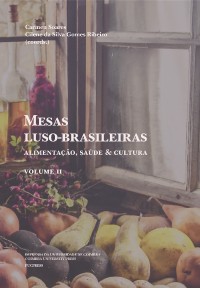Please use this identifier to cite or link to this item:
https://hdl.handle.net/10316.2/45251| Title: | “Alimentar” o auto-da-fé: uma incursão pelos gastos do principal cerimonial da Inquisição portuguesa no século XVIII | Other Titles: | “Feeding” the auto-da-fé: an incursion through the expenses of the principal ceremonial of the Portuguese Inquisition in the 18th century | Authors: | Lopes, Bruno | Keywords: | Inquisition;auto-da-fé;finances;food;sociability at table;Inquisição;auto-da-fé;finanças;alimentação;sociabilidades à mesa | Issue Date: | 2018 | Publisher: | Imprensa da Universidade de Coimbra | Journal: | http://hdl.handle.net/10316.2/45207 | Abstract: | The auto-da-fé had represented the public exhibition of power by
the Portuguese Inquisition. It was during its execution that the activity of Holy
Office was made public. It happened after many months – even years – in which
the defendant had been imprisoned and finally the final product of their work was
shown to the society, quoting Francisco Bethencourt. In this way it was broken the
silence, that was one of the pillars of the Inquisition existence. In this work, we
intend to analyse the structure of spending’s on the auto-da-fé, what will allow us
to contextualize the food costs (dinner of the day before or lunch/dinner of the day
of the auto execution). We will try to identify the differences between the executive
ministers and the officials of executive branch in what the foods consumed
are concerned. In other words, what hierarchies can be identified from this point?
Were there substantial differences? Was it a moment that was shared by all or were
they separated: ministers to one side, officials to the other? That is, it is known that
there were different elements from several institutions involved in the carrying out
of the auto-de-fé, but will it be true that all of them shared the same meal? Were
these meals reserved only to the members of Inquisition? O auto-da-fé, consumido como um espectáculo pelos coevos, era o expoente máximo da expressão do poder inquisitorial. Era durante a sua realização que a actividade do Santo Ofício se tornava pública. Após muitos meses – por vezes, até anos – em que o réu tinha estado encarcerado, finalmente, prestava-se contas, junto da população, para parafrasear Francisco Bethencourt. Quebrava-se, deste modo, o silêncio que era um dos pilares da existência do Tribunal da Fé. Neste trabalho, pretende-se analisar a estrutura dos gastos do auto-da-fé, o que permitirá contextualizar os custos com a alimentação (jantar da véspera ou almoço/jantar do dia da realização do cerimonial). Tentar-se-á identificar eventuais diferenças entre os quadros de ministros e oficiais – do ponto de vista dos alimentos consumidos. No fundo, questionar: que hierarquias podem ser identificadas a partir daqui? Haveria diferenças substanciais? Tratava-se de um momento que era partilhado por todos, ou eram separados: ministros para um lado, oficiais para o outro? Sabe-se que havia diferentes elementos de várias instituições envolvidas na realização do auto-da-fé, mas será que todos partilhavam a mesma refeição? Eram estas reservadas apenas aos membros da Inquisição? O que representava a realização do auto, no quadro global das despesas da instituição? |
URI: | https://hdl.handle.net/10316.2/45251 | ISBN: | 978-989-26-1719-0 978-989-26-1720-6 (PDF) |
ISSN: | 2183-6523 | DOI: | 10.14195/978-989-26-1720-6_11 | Rights: | open access |
| Appears in Collections: | Mesas luso-brasileiras: alimentação, saúde & cultura. vol. II |
Files in This Item:
| File | Description | Size | Format | |
|---|---|---|---|---|
| _alimentar__o_auto-da-fe.pdf | 1.9 MB | Adobe PDF |  |
Items in DSpace are protected by copyright, with all rights reserved, unless otherwise indicated.
